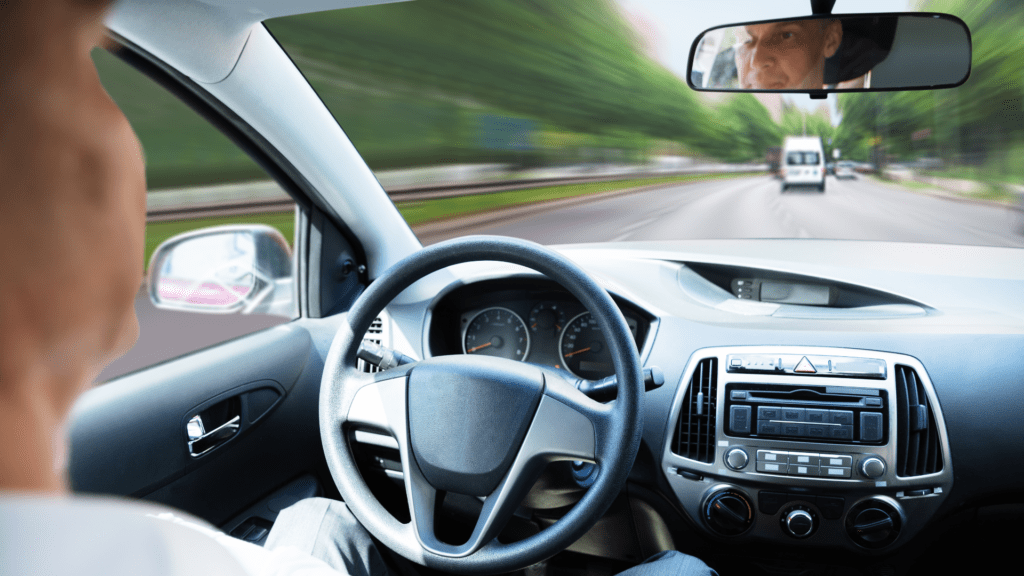In 2024, the landscape of transportation and liability is undergoing a significant transformation with the rapid advancement and integration of self-driving cars. This article will delve into the intricate world of autonomous vehicles, shedding light on their impact on traffic regulations, legal exemptions, and the evolving dynamics of insurance considerations.
As we navigate through the complexities of this technological revolution, we will explore the future of self-driving cars and their profound significance, and how they are reshaping the insurance industry. We will conduct a comprehensive cost analysis of autonomous vehicle insurance, uncovering both the advantages and disadvantages of this innovative mode of transportation. We will address frequently asked questions about self-driving car insurance, ensuring that you are equipped with the knowledge to understand and navigate this evolving landscape.
With a robust compilation of resources and a transparent methodology, this article is designed to provide a comprehensive understanding of self-driving cars and the associated liability in 2024.
Understanding Self-Driving Cars and Liability in 2024
The year 2024 marks a pivotal juncture in the evolution of self-driving cars and the associated legal and liability frameworks, particularly in light of the advancements and regulatory shifts that have shaped the landscape of autonomous vehicle technology.
Technological advancements have revolutionized the capabilities of self-driving cars, integrating cutting-edge sensors, machine learning, and artificial intelligence algorithms to enhance decision-making processes and safety protocols. These innovations have notably propelled the industry towards greater autonomy and reliability.
Furthermore, regulatory shifts have been instrumental in streamlining the legal considerations surrounding self-driving cars, fostering an environment conducive to their widespread adoption. Legislators and policymakers have been actively engaging in discussions to address liability, insurance, and safety standards, aiming to ensure a harmonized framework for the deployment of autonomous vehicles.
The implications for public safety agencies are substantial, as they navigate the evolving landscape of transportation. The integration of self-driving cars calls for a reassessment of traffic management, emergency response protocols, and law enforcement strategies, necessitating collaborative efforts to align with the transformative potential of autonomous technology. Insights from the National Highway Traffic Safety Administration (NHTSA) continue to provide critical perspectives, acknowledging the challenges and opportunities associated with the proliferation of self-driving cars.
Overview of Self-Driving Cars
Self-driving cars, also known as autonomous vehicles, represent a transformative leap in transportation technology, merging driverless capabilities with cutting-edge innovations from leading manufacturers such as BMW and General Motors to redefine road safety and infrastructure norms.
The advent of self-driving cars has brought about significant advancements in the realm of driverless technology, with sophisticated sensors, cameras, and artificial intelligence algorithms enabling these vehicles to perceive their surroundings and make real-time decisions. The integration of BMW’s state-of-the-art systems and General Motors’ advanced engineering prowess has propelled the development of autonomous vehicles, revolutionizing the way we perceive transportation.
Impact of Self-Driving Cars on Traffic Regulations
The proliferation of self-driving cars has ushered in a paradigm shift in traffic regulations, with cities like San Francisco and the policies of law enforcement agencies such as the San Francisco Police Department (SFPD) adapting to the nuances of autonomous vehicle operations and addressing challenges related to traffic tickets and regulatory compliance.
Self-driving cars are revolutionizing the traditional traffic management systems, prompting authorities to re-evaluate existing laws and policies to accommodate this groundbreaking technology. In San Francisco, a city at the forefront of adopting autonomous vehicles, the integration of self-driving cars into everyday traffic has raised critical questions about how to enforce traffic regulations effectively and fairly. The SFPD is actively navigating these uncertainties, emphasizing the need for a robust regulatory framework to govern the interactions between autonomous and human-driven vehicles.
The advent of self-driving cars also casts a spotlight on the future of traffic ticketing. With the potential for reduced human error, the traditional patterns of traffic violations and tickets are in flux, compelling authorities to reimagine how enforcement and ticketing will function in an era dominated by autonomous vehicles. As San Francisco and other cities grapple with these changes, they are actively engaging in dialogue to shape new regulations and methodologies for addressing traffic violations involving these advanced technologies.
Legal Exemptions for Self-Driving Cars
Navigating the legal landscape of self-driving cars necessitates a comprehensive understanding of California law, particularly in the context of legal exemptions, liability considerations, and the evolving regulatory dynamics that govern the deployment and operation of autonomous vehicles.
When looking into the legal exemptions for self-driving cars in California, it is crucial to consider the intricate web of liability factors that come into play. An important aspect is the allocation of responsibility between the vehicle manufacturers, software developers, and users in the event of accidents or malfunctions. The evolving legal landscape underscores the need to adapt regulations to the rapid advancements in autonomous vehicle technology, promoting both innovation and public safety.
Insurance Considerations for Autonomous Vehicles
The intersection of autonomous vehicles and insurance necessitates a nuanced understanding of the implications stemming from accidents, technological advancements, and the evolving landscape of liability, with industry insights from organizations such as the Insurance Information Institute shedding light on the transformative nature of insurance considerations for self-driving cars.
Regarding accidents involving autonomous vehicles, the traditional notions of fault and liability are being redefined. With the integration of advanced sensors and AI technology, determining responsibility for accidents may shift from drivers to manufacturers or software developers. This shift brings forth a whole new set of challenges in establishing liability and crafting insurance policies.
The technological advancements in self-driving cars constantly evolve, raising questions about how insurance providers will assess risks and pricing models. The rapid pace of innovation in autonomous vehicle technology necessitates insurers to adapt and stay abreast of these developments to accurately underwrite policies and offer comprehensive coverage.
From an industry perspective, the rise of autonomous vehicles is pushing the insurance sector towards a more proactive and anticipatory approach. Insurers are exploring more dynamic and flexible insurance products, leveraging telematics data and real-time risk assessment to tailor coverage that aligns with the unique challenges and opportunities presented by autonomous vehicles.
The Future of Self-Driving Cars
The future of self-driving cars holds immense promise, driven by ongoing technological innovations, collaborative efforts among leading manufacturers, and the evolving regulatory landscape that seeks to shape the trajectory of autonomous vehicle deployment and operation.
Technological advancements in the autonomous vehicle domain continue to push the boundaries of innovation, from advanced AI algorithms to enhanced sensor technologies, enabling these vehicles to navigate complex environments with increasing precision and safety. The collaborations within the industry have fostered synergistic partnerships, with renowned automotive companies teaming up with tech giants and startups to collectively propel the development and commercialization of self-driving car technology.
As the technology matures, the focus shifts towards addressing the regulatory challenges associated with the widespread adoption of autonomous vehicles. The evolving regulations aim to establish comprehensive frameworks for safety, liability, and infrastructure integration, paving the way for the seamless integration of self-driving cars into our everyday lives while ensuring the highest standards of public safety and legal compliance.
Significance of Autonomous Vehicles
The significance of autonomous vehicles reverberates across public safety agencies and regulatory bodies such as the National Highway Traffic Safety Administration (NHTSA) and the Centers for Disease Control and Prevention, underscoring the profound implications for transportation infrastructure and societal well-being.
Autonomous vehicles have the potential to revolutionize the way we think about transportation, reshaping urban landscapes and redefining the very concept of mobility. With the ability to enhance public safety through advanced technologies such as collision avoidance systems and adaptive cruise control, these vehicles offer a glimpse into a future where traffic accidents and fatalities are significantly reduced.
Insights from the NHTSA convey the transformative impact of autonomous vehicles on road safety, projecting a future where human error, a leading cause of accidents, becomes less prevalent as self-driving cars take the wheel. The Centers for Disease Control and Prevention highlight the potential for autonomous vehicles to mitigate the societal costs of traffic-related injuries and fatalities, leading to substantial improvements in public health and well-being.
Changing Dynamics in the Insurance Industry
The proliferation of autonomous vehicles has catalyzed transformative dynamics within the insurance industry, reshaping conventional paradigms related to liability, regulatory compliance, and valuation methodologies as elucidated by industry stalwarts like the Kelly Blue Book.
This shift in the automotive landscape has prompted a reevaluation of responsibility in the event of accidents or malfunctions involving autonomous vehicles. As autonomous technology continues to advance, questions arise over the allocation of liabilities between vehicle manufacturers, software developers, and traditional drivers, challenging the traditional insurance model.
The regulatory landscape also faces significant implications, with policymakers grappling with adapting existing laws to accommodate the unique features and risks associated with autonomous vehicles, making it essential to monitor ongoing developments in this complex, rapidly-evolving area.
Cost Analysis for Autonomous Vehicle Insurance
Conducting a comprehensive cost analysis for autonomous vehicle insurance entails a meticulous examination of factors encompassing accidents, technological nuances, road safety imperatives, and manufacturer specifications to delineate the intricate landscape of insurance considerations for self-driving cars.
Accidents involving autonomous vehicles present a unique challenge for insurers due to the complexity of liability determination. The interplay of AI decision-making, human interaction, and potential software malfunctions creates a web of variables requiring careful scrutiny. The evolution of technological nuances such as sensor accuracy, algorithm efficacy, and cybersecurity measures contributes to the intricate fabric of risk assessment. The imperative of road safety is magnified in autonomous driving, necessitating a deep understanding of traffic dynamics, infrastructure compatibility, and emergency response protocols. Manufacturer specifications, including vehicle design, propulsion systems, and software integration, further shape the insurance landscape by influencing risk profiles and underwriting parameters.
Advantages of Self-Driving Cars
Self-driving cars offer an array of compelling advantages, spanning technological breakthroughs, infrastructural enhancements, and regulatory synergies that collectively redefine the contours of modern transportation and mobility.
The technological breakthroughs associated with self-driving cars encompass advanced sensors, artificial intelligence, and real-time data processing, enabling vehicles to navigate complex urban environments with enhanced safety and efficiency. Infrastructural enhancements such as smart traffic management systems and dedicated lanes further optimize the integration of autonomous vehicles into existing transportation networks. These advancements, coupled with regulatory synergies that accommodate autonomous operation, pave the way for a paradigm shift in how people and goods are transported.
Disadvantages of Self-Driving Cars
While self-driving cars hold immense promise, the domain is also fraught with a spectrum of challenges ranging from accidents and liability concerns to the nuances of regulatory divergence across states such as California, Texas, and Arizona, underscoring the complex landscape of disadvantages associated with autonomous vehicle technology.
One of the primary disadvantages of self-driving cars is the issue of accidents. Despite advanced technology, these vehicles are not immune to accidents caused by system malfunctions or unpredictable external factors. The liability concerns surrounding self-driving cars raise intricate legal questions, as determining responsibility in case of accidents involving autonomous vehicles can be arduous.
The regulatory landscape for self-driving cars is far from uniform across states. States like California, Texas, and Arizona have varying regulations, which can lead to a lack of standardized protocols for testing and deployment, hindering the seamless integration of autonomous vehicle technology.
Frequently Asked Questions about Self-Driving Car Insurance
Addressing the frequently asked questions about self-driving car insurance mandates a nuanced exploration of regulatory dynamics, insights from the NHTSA, and the interplay with transportation infrastructure to provide comprehensive elucidation on the intricacies of insurance considerations for autonomous vehicles.
The regulatory landscape for self-driving car insurance is evolving rapidly to accommodate the emergence of autonomous vehicles. The National Highway Traffic Safety Administration (NHTSA) plays a crucial role in setting the safety standards and regulations for these advanced automobiles. Understanding these regulatory frameworks is pivotal for insurance providers, as they must align their policies with the legal requirements to ensure comprehensive coverage for self-driving cars.
The impact of autonomous vehicles on transportation infrastructure raises important questions about liability and risk allocation, prompting insurers to reassess traditional models and adapt to the changing dynamics of mobility and technology.
Resources and Methodology
The resources and methodology employed in understanding the landscape of autonomous vehicles encompass a rigorous analysis of technology innovations, the role of driver assistance systems, the advent of robotaxis, and the transformative impact on insurance and infrastructure paradigms to provide a comprehensive overview of the underpinning methodologies and data sources.
Technology innovations play a pivotal role in the development of autonomous vehicles, encompassing advancements in artificial intelligence, sensor technologies, and connectivity solutions. Driver assistance systems, such as adaptive cruise control and lane-keeping assist, contribute significantly to the safe and efficient operation of autonomous vehicles.
The emergence of robotaxis, operating on-demand and sans human drivers, introduces a paradigm shift in urban mobility and transportation services. This disruptive evolution has far-reaching implications for insurance practices and infrastructure planning. It demands a reassessment of risk assessment models and coverage frameworks by insurance providers.
The integration of autonomous vehicles into urban landscapes calls for infrastructure adaptations, including dedicated lanes, charging stations, and smart intersections to facilitate seamless integration and safe operation.
Frequently Asked Questions
1. What is the current state of self-driving car technology and liability in 2024?
As of 2024, self-driving car technology has advanced significantly, with many major car manufacturers and tech companies now offering self-driving capabilities. However, determining liability in the event of an accident involving a self-driving car is still a complex issue that is yet to be fully resolved.
2. How do self-driving cars handle liability compared to traditional human-driven cars?
Self-driving cars use a combination of sensors, cameras, and artificial intelligence to make decisions on the road, which can make determining liability in case of an accident more challenging. In traditional human-driven cars, the driver is typically held liable for any accidents they cause.
3. Is the introduction of self-driving cars expected to impact insurance policies?
Yes, the rise of self-driving cars is expected to have a significant impact on insurance policies. As liability in accidents involving self-driving cars is still being determined, insurance companies may need to adapt their policies to cover both the manufacturer and the driver in case of an accident.
4. What measures are being taken to address liability concerns with self-driving cars?
In 2024, there are ongoing discussions and debates about liability laws and regulations for self-driving cars. Some proposed solutions include implementing a “no-fault” system where liability is shared among all parties involved in an accident, or creating a separate insurance system for self-driving cars.
5. Are there any notable cases of liability involving self-driving cars in 2024?
Yes, there have been several high-profile cases of accidents involving self-driving cars in 2024, raising questions about liability. In some cases, the manufacturer has been held liable for malfunctions in the technology, while in others, the driver has been held responsible for not being attentive while the car was in autonomous mode.
6. How can individuals protect themselves from liability when using self-driving cars?
As self-driving car technology is still relatively new, it is essential to be cautious when using these vehicles. Individuals can protect themselves from liability by thoroughly understanding the capabilities and limitations of the self-driving technology, always paying attention while the car is in autonomous mode, and following all laws and regulations on the road.





